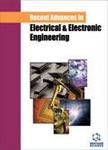版权所有:内蒙古大学图书馆 技术提供:维普资讯• 智图
内蒙古自治区呼和浩特市赛罕区大学西街235号 邮编: 010021

作者机构:Harbin Univ Sci & Technol Coll Mech & Power Engn Xuefu Rd Harbin 15080 Heilongjiang Peoples R China
出 版 物:《RECENT ADVANCES IN ELECTRICAL & ELECTRONIC ENGINEERING》 (Recent Adv. Electr. Electron. Eng.)
年 卷 期:2022年第15卷第4期
页 面:309-322页
核心收录:
基 金:Natural Science Foundation of Heilongjiang Province of China [LH2019E064] Young Innovative Talents Training Program for General Undergraduate Colleges and Universities in Heilongjiang Province of China [UN-PYSCT-2018197] National Natural Science Foundation of China
主 题:Electro-hydraulic servo systems PID control collaborative control adaptive fuzzy neural network control sensor fusion signal processing algorithms
摘 要:Background: The single position control or force control of the electro-hydraulic servo system has long been unable to meet the actual needs of production and life. To achieve a good control effect and solve various problems in real life, people no longer only consider a single position control or force control. Objective: The proposed method provides technical support for multi-objective collaborative control of the electro-hydraulic servo system, completes the requirements of multitasking operation, improves the positioning accuracy and response velocity of the electro-hydraulic servo system, and realizes the synergy between the position and force. Methods: A control method of the outer loop control of force as feedforward compensation is adopted to realize the coordinated control of force and position based on position control. The position control part adopts the PID control algorithm to ensure real-time response accuracy and positioning accuracy. The outer force loop uses an adaptive fuzzy neural network control algorithm to reduce vibration and shock caused by system instability and nonlinear factors during the force control process. Results: The control effect of the designed position/force collaborative controller is verified by simulation and experiment. It can effectively reduce the vibration and impact caused by the contact force during the working process of the system, at the same time greatly improving the accuracy of position control and improving the stability of the system. Conclusion: The designed force/position collaborative control system has a good overall control effect.